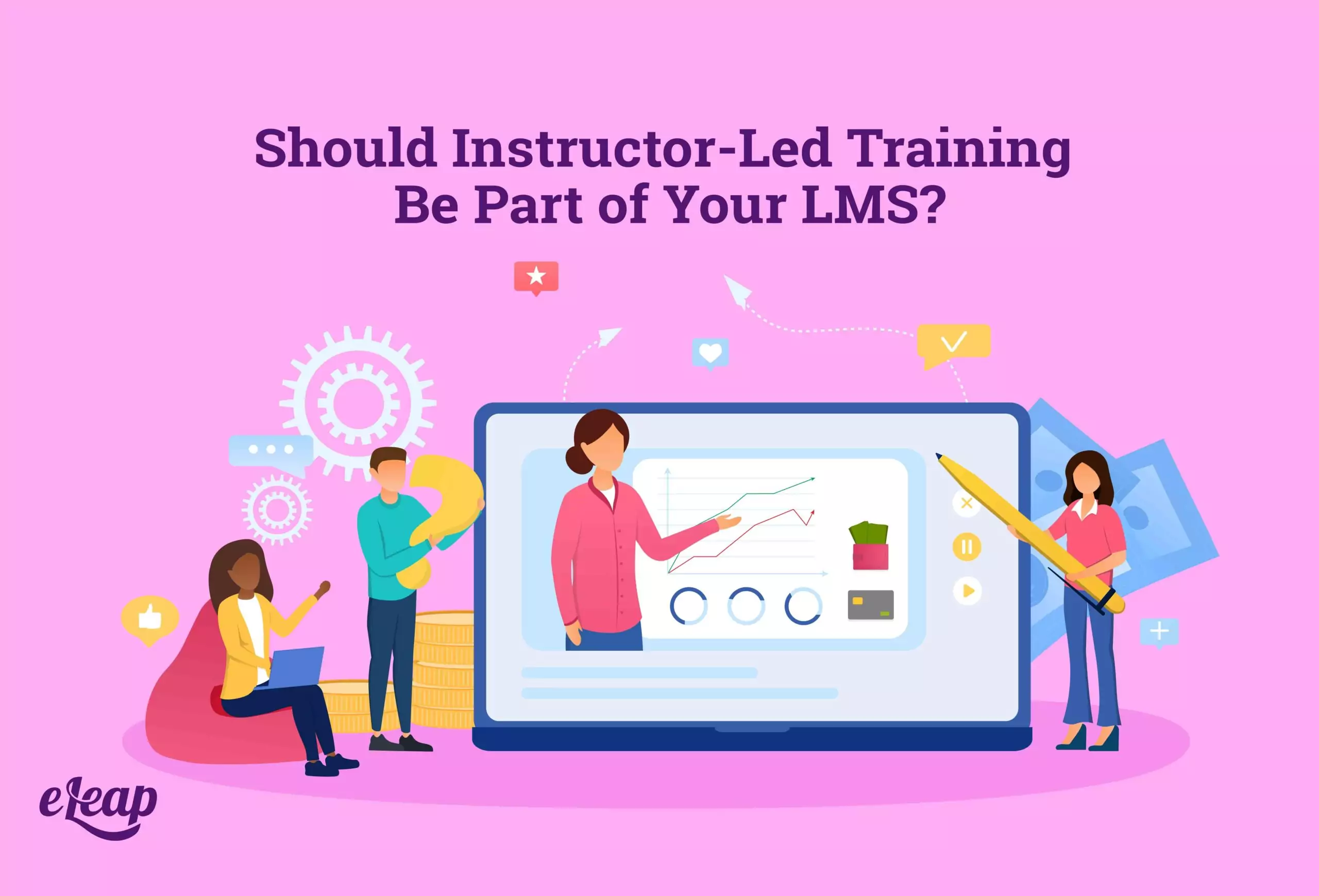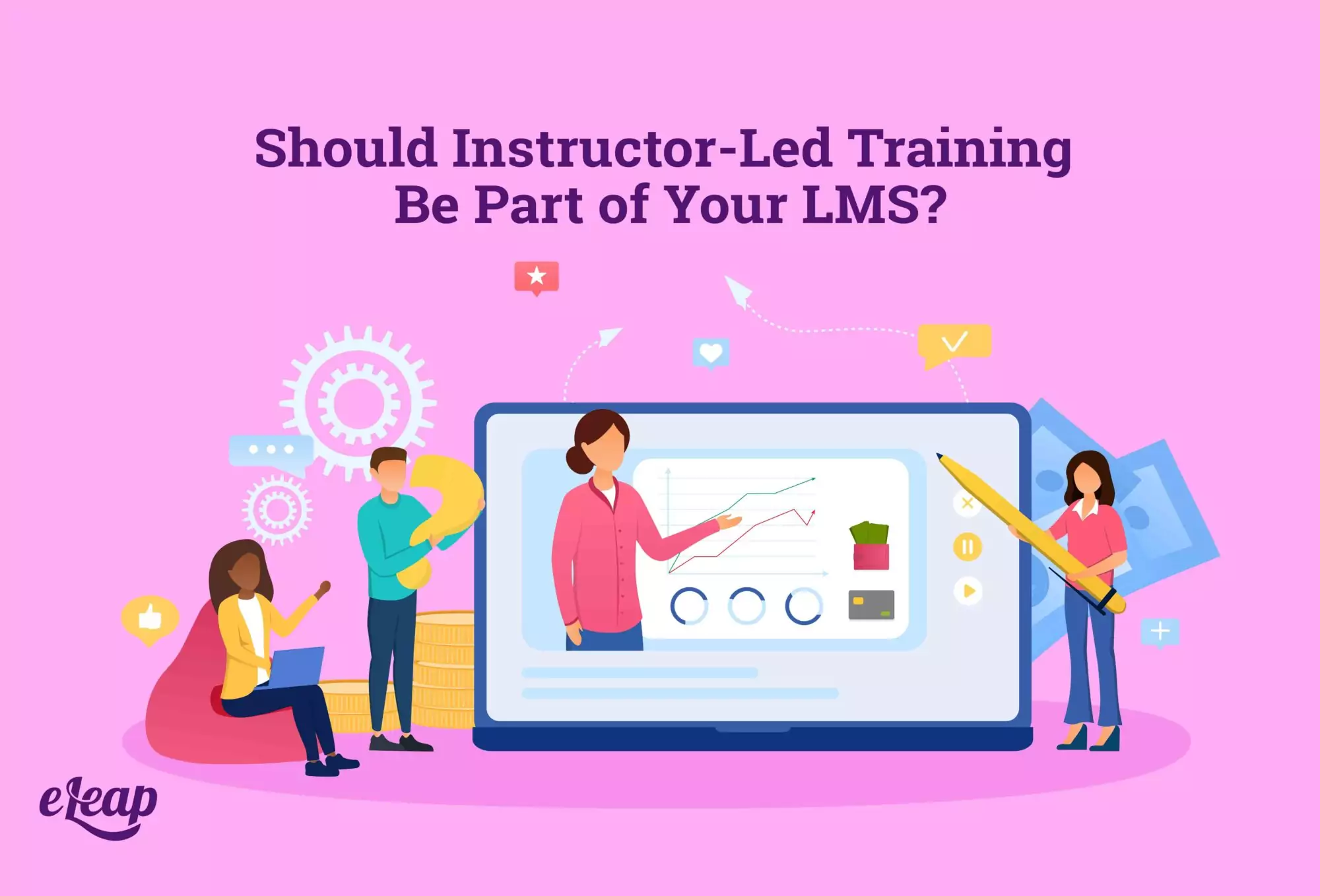Should Instructor-Led Training Be Part of Your LMS?

When it comes to implementing an LMS, or learning management system, part of the debate is what type of content to include. Some organizations stick to the standard fare—virtual courses and quizzes to test knowledge, with little real-time or active training on the virtual side of things. They feel that the hands-on part of the training will be active enough and that the “classroom training” is just another part of the process to get through.
The caveat is that if your training is just something to “get through,” you’re already setting employees up to fail. How can companies expect learners to engage and develop their skills when the overarching conversation surrounding training is to just get through it? Perhaps in the past, that’s what some companies were limited to. They didn’t have the means to create these ideal training programs. That’s no longer an issue.
The modern LMS can allow organizations to create dynamic learning and development resources for their employees, including hierarchical training and upskilling opportunities that can help organizations promote from within. The latter is a must in today’s company culture. Employees don’t want to watch others get hired over them and suddenly have to take orders from someone who’s only been in the business five days when they’ve been with the company 20 years.

What Is Instructor-Led Training?
As the name implies, this type of training is essentially a classroom-type module. It consists of an instructor (trainer, manager, etc.) that is delivering the training and a body of learners that are learning the information. In the physical world, this would be a training class where you have people learn all the formal parts of the business. In the virtual world, it’s the same concept, but digital. Therefore, there are a lot more options.
Instructor-led training can be done in a one-on-one format. It could be created for specific positions or upskilling opportunities. You could have a certain amount of instructor-led courses and then some self-training modules, giving employees diversity in their learning and helping them retain the right information in the best ways.
Thanks to tools like video conferencing, screen sharing, and the Internet, people don’t even have to be in a physical classroom to benefit from instructor-led training. It may not be necessary (or right) for every training opportunity, but it certainly has its place in the modern learning and development world.
Dynamic Means Diversified
Yes, dynamic online learning is also about using the best tools for the job to help deliver the right learning for the right candidate. However, it is mainly about choosing a variety of tools and resources to educate employees and train them on their roles within the organization. It means utilizing instructor-led training along with self-paced modules, quizzes, and even hands-on training and development opportunities. It means combining all of the learning into one unified platform, which today is simply known as the LMS.
With the LMS platforms that are available today, companies can do a lot more than have Zoom training sessions or continue to deliver the same standard-issue company training that’s been passed down for the last decade. Leaders can even set up custom learning journeys so that candidates and employees can be monitored to ensure that they’re getting the best learning opportunities and acquiring the skills that they need.
White-label LMS is usually the best option. Although it might seem cost-prohibitive for small businesses, every organization can benefit from creating a custom learning environment for its employees. Plus, the more that is customized, the more diverse and specific the training can be, which means people learn exactly what they need to know. It also gives you the chance to combine the perfect types of training and learning for your people, no matter what those might be.
Comprehension and Cohesiveness
Instructor-led training is helpful for more complex topics, or those that require someone to put things in basic terms. It’s been found in several studies that people have much better success with comprehension when they are given information verbally from another person when that person can also convey the meaning and context behind the information. Slideshows and other automated training modules are great for basic compliance or training, but they don’t engage learners the way that instructors can.
And, unlike AI and automated learning that often lead employees to draw the right conclusions about what they are being taught, the instructor can actually lead everyone right to the appropriate conclusion and ensure that people are on the right track. Cohesiveness (or a lack thereof) is one of the biggest complaints among employees when it comes to training and online learning platforms. Using instructor-led courses can be the glue that ties all of the L&D together and brings everyone out of the automated virtual training world.
Instructors Can Be Anyone
Another important discernment here is that instructor-led doesn’t mean that companies have to hire teachers to deliver the courses. They simply need to choose the best subject matter expert (SME) within the organization to deliver each training module. An instructor-led course on the company benefits enrollment from HR, for example, is a great piece of training material to have. Not only does it teach people how your benefits work, but it saves a lot of private HR meetings and questions from people because they already know how to proceed once their benefits are active.
Since instructors can be anyone, of course, you should make sure that they are the right people for the job. That means that in addition to being able to deliver the information in a way people can absorb it, they also have to be engaging and have a demeanor that people will respect and want to listen to. Having the most disgruntled HR assistant deliver a course on HR policies will be just as bad as watching those old training videos from the 1990s.
Find a Place for ILT in Your LMS
When you do it right, instructor-led training can be a great asset to the organization. Just make sure that it’s not the only way people are trained by creating a custom LMS that encompasses all the best L&D tools available today. Here at eLeaP, we can provide you with the resources and solutions to improve your employee training program and garner your results. Contact us today for a free consultation.